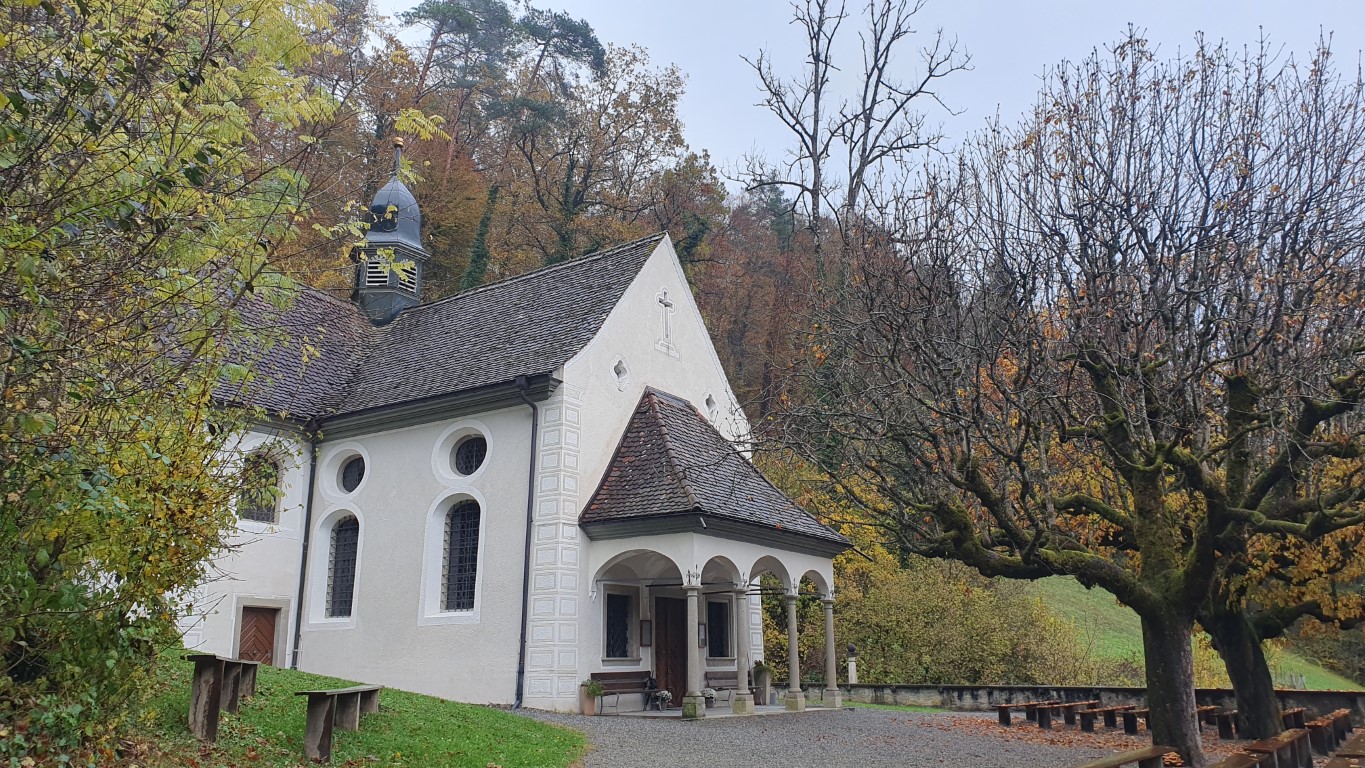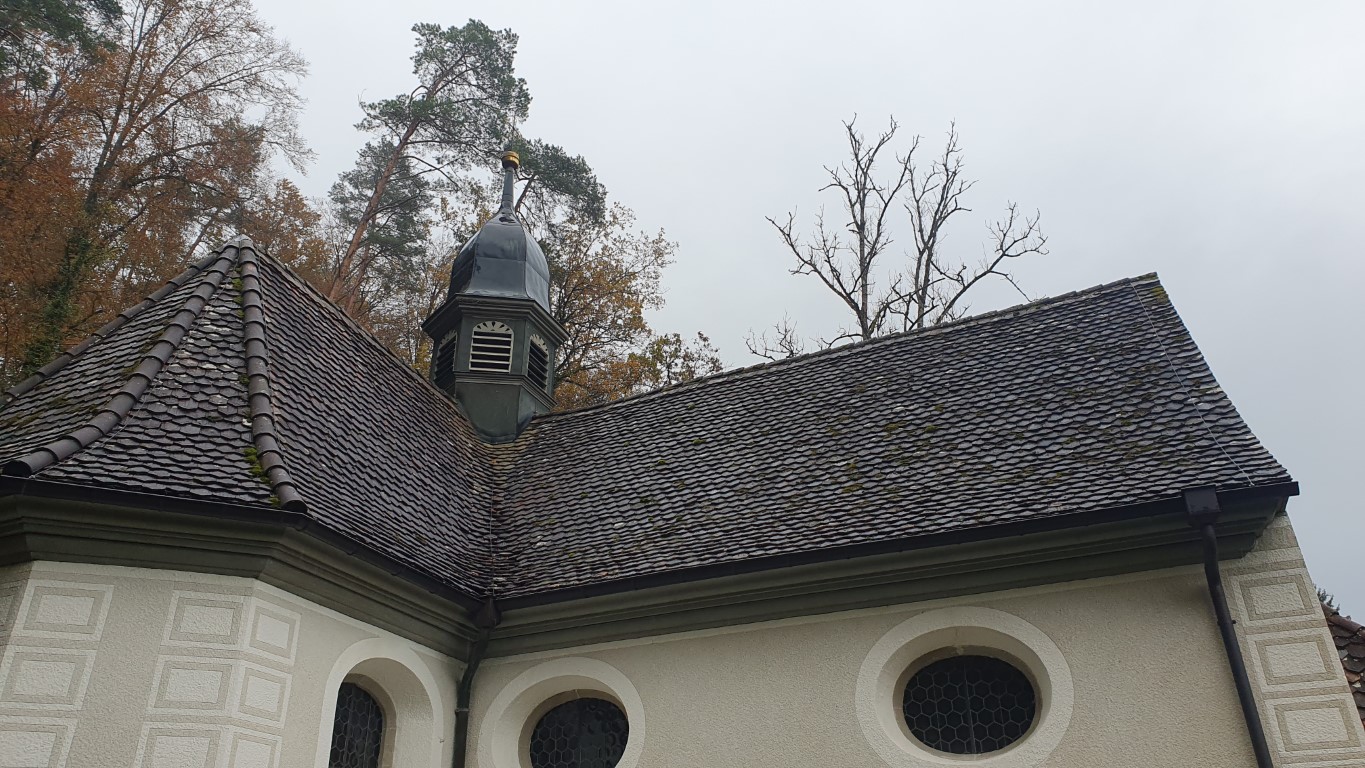When someone enters the idyllic Jonental for the first time, they are greeted by a truly magical scenery. In the middle of a green forest clearing, surrounded by the quiet solitude of the forest, the enchanting pilgrimage chapel rises and leaves the visitor in awe.
It is as if time has stood still in this enchanted place. The scent of damp moss and fresh greenery fills the air and mixes with the gentle rustling of the leaves in the wind. The birds chirp their melodies and fill the place with their cheerful song. The path to the chapel leads the visitor along a picturesque path that winds through the dense forest. With every step, the excitement grows, because no one expects to find such splendor in such a remote place.
And then, suddenly, it appears before the eyes of the viewer: the graceful pilgrimage chapel. Its delicate tower rises majestically into the sky and seems to catch the light of the sun. Its white walls are surrounded by an aura of mystery, giving it an almost mystical character.
The chapel is located about two kilometers east of Jonen and is a true pearl in the middle of the picturesque landscape. A place that touches the senses and fills the soul with peace. Anyone who discovers this jewel in the Jonen Valley will be deeply touched by its beauty and romantic atmosphere.
Story
The pilgrimage chapel first appears in historical records in 1521, but it was completely rebuilt in 1621. Unfortunately, it was desecrated in a hideous manner by men from the Zurich area during the religious war in 1656. The crucifix, miraculous image and altar were destroyed with sabre blows.
In 1734, the Bremgarten town council, which acts as the overlord of the cellar office, decided to renovate the chapel. The contract was awarded to the respected master craftsman Hans Georg Urban from Lucerne. His skills and expertise made him the ideal choice for this important task.
Finally, in 1742, the long-awaited moment of inauguration arrived. The chapel shines in new splendor and opens its doors to the faithful.
Legend
A fascinating legend tells of the origins of the chapel. It is said that a shepherd followed a lost goat and found it unharmed in the ravine. There he heard soft music from afar, which magically attracted him. He lay down and fell into a deep sleep. In his dream he experienced a festive service during which the Mother of God appeared on the high altar in radiant splendor. When the shepherd boy awoke, he discovered next to him an image of the gracious mother that corresponded exactly to what he had seen in the dream. He recognized divine guidance in this image.
The farmers of the village heard of the boy's extraordinary experience and went looking for him. When they finally found him, they brought him and the image back to the village. There they decided to build a chapel on the spot where the shepherd had found the image. But time and again, overnight, the walls were thrown into the ravine by an invisible hand. In desperation, the villagers turned to a hermit, who advised them to build the chapel exactly where the image had been found. From that moment on, the construction work was no longer interrupted and the work was completed in no time.
According to popular tradition, the statue is "dur de Bach ab echo", which means that it was thrown into the Jonerbach during the iconoclasm in the neighboring canton of Zurich and from there washed into the Jonental. This story gives the chapel an additional mystical aura and makes the faithful tremble in awe of the grace and miracle of the Mother of God.
Access
From Litzi there are a few parking spaces above the chapel. Then you walk down the hill.









